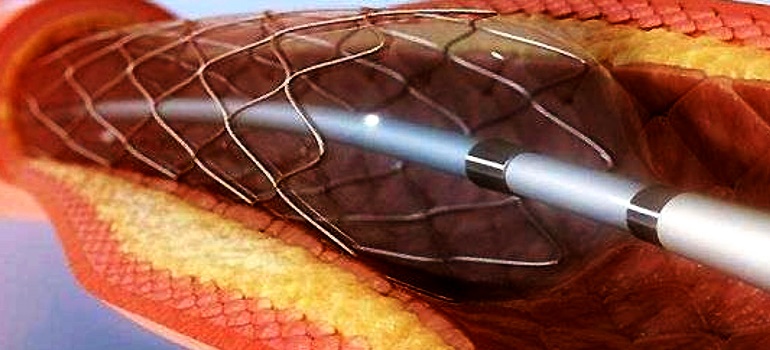
Instructions :
Angioplasty is a procedure to open narrowed or blocked blood vessels that supply blood to the heart. These blood vessels are called the coronary arteries. A coronary artery stent is a small, metal mesh tube that expands inside a coronary artery.
What to Expect at Home
You may have pain in your groin area, arm, or wrist. This is from the catheter (flexible tube) that was inserted to do the procedure. You may also have some bruising around and below the incision.
The chest pain and shortness of breath you likely had before the procedure should be much better now.
Self-care
In general, people who have angioplasty can walk around within 6 hours after the procedure. Complete recovery takes a week or less. Keep the area where the catheter was inserted dry for 24 to 48 hours.
If the doctor put the catheter in through your groin:
- Walking short distances on a flat surface is OK. Limit going up and down stairs to around 2 times a day for the first 2 to 3 days.
- DO NOT do yard work, drive, squat, carry heavy objects, or play sports for at least 2 days, or until your health care provider tells you it is safe.
If the doctor put the catheter in your arm or wrist:
- DO NOT lift anything heavier than 10 pounds (4.5 kilograms) (a little more than a gallon of milk) with the arm that had the catheter.
- DO NOT do any heavy pushing, pulling or twisting with that arm.
For a catheter in your groin, arm, or wrist:
- DO NOT take a bath or swim for the first week. You may take showers, but make sure the area where the catheter was inserted does not get wet for the first 24 to 48 hours.
- You should be able to return to work in 2 to 3 days if you do not do heavy work.
sYou will need to care for your incision.
- Your provider will tell you how often to change your dressing.
- If your incision bleeds or swells up, lie down & put pressure on it for 30
Angioplasty does not cure the cause of the blockage in your arteries. Your arteries may become narrow again. Eat a heart-healthy diet, exercise, stop smoking (if you smoke), and reduce stress to help lower your chances of having a blocked artery again. Your provider may give you medicine to help lower your cholesterol.
Most people take aspirin together with another antiplatelet medicine such as clopidogrel , prasugrel , or ticagrelor after this procedure. These medicines are blood thinners. They keep your blood from forming clots in your arteries and stent. A blood clot can lead to a heart attack. Take the medicines exactly as your provider tells you. DO NOT stop taking them without talking with your provider first.
When to Call the Doctor
Call your doctor if:
- There is bleeding at the catheter insertion site that does not stop when you apply pressure.
- There is swelling at the catheter site.
- Your leg or arm below where the catheter was inserted changes color, becomes cool to touch, or is numb.
- The small incision for your catheter becomes red or painful, or yellow or green discharge is draining from it.
- You have chest pain or shortness of breath that does not go away with rest.
- Your pulse feels irregular — very slow (fewer than 60 beats), or very fast (over 100 to 120 beats) a minute.
- You have dizziness, fainting, or you are very tired.
- You are coughing up blood or yellow or green mucus.
- You have problems taking any of your heart medicines.
- You have chills or a fever over 101°F (38.3°C).

